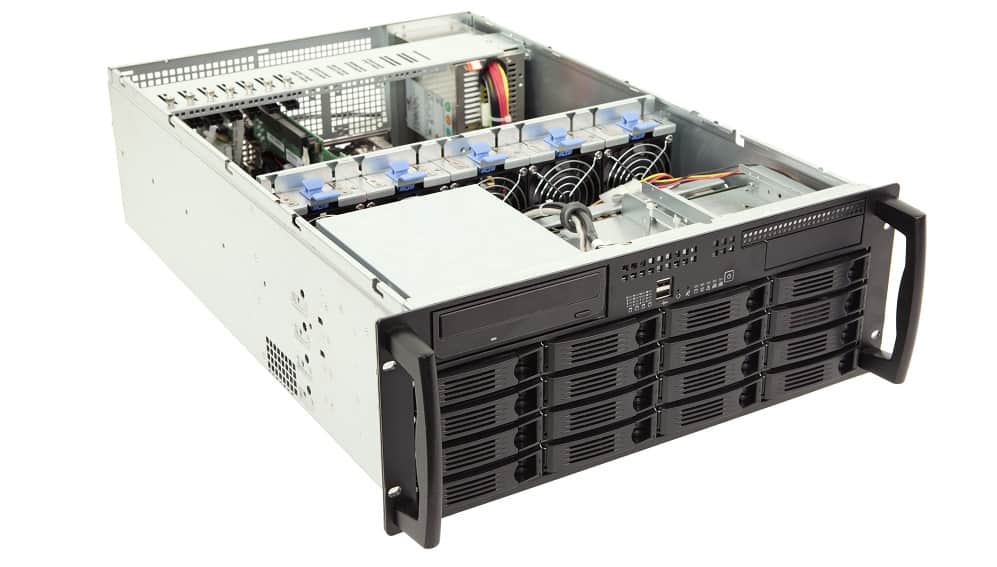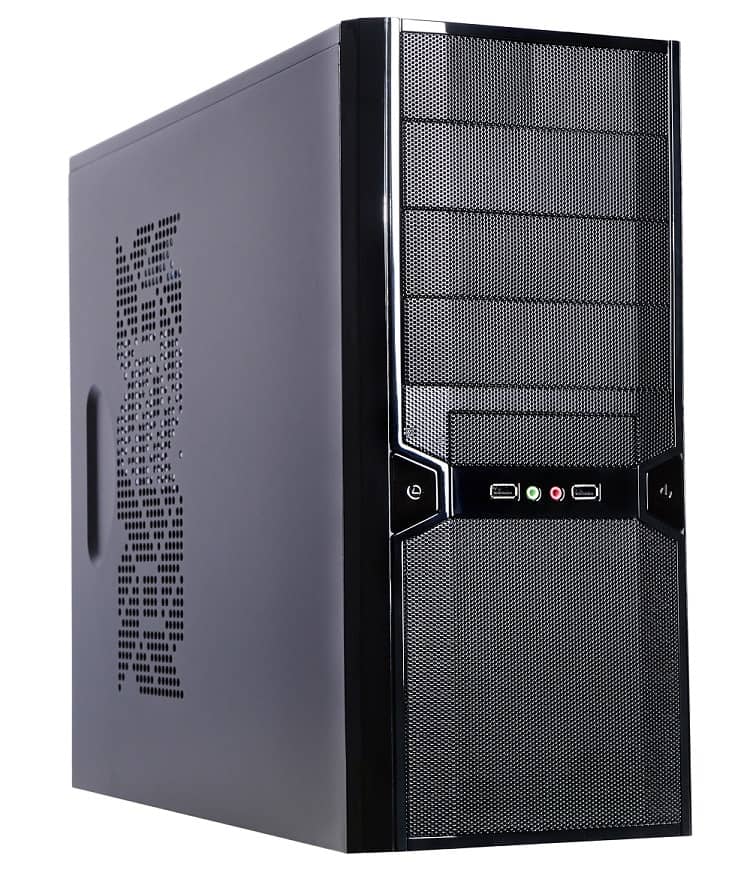Servers are primarily designed to gather and manage large volumes of data across a network. It uses a local area network (LAN) or the internet to provide services to clients (desktops). Desktop computers are designed for consumer use. They feature a user-friendly interface and operating system designed to fulfill daily computing tasks.
Table of Contents
What is a Server?

A server is a computer designed for a singular purpose: providing services on behalf of clients (desktops or workstations). Clients connect to the server through the internet or via a local area network (LAN).
The term server can refer to a physical machine, a virtual machine/server, or software that is performing the server services.
A physical server is a computer that is used to run server software. A virtual server is then a virtual representation of the physical server. A virtual machine is created by installing a hypervisor onto the physical server and then the virtualization host allocates the physical server’s hardware resources (CPU, memory, storage, and bandwidth) to each virtual machine.
A server requires at a minimum: an operating system (OS) and an application. The OS runs the server applications and allows for clients to communicate with the server application.
A server is essentially a “role” that a computer takes as they’re sole job is to perform server related tasks.
What is a Desktop?

A desktop is a computer designed for user-friendly interaction with an operating system. Desktops are comprised of hardware (CPU, GPU, RAM, Storage, PSU, Motherboard, etc) as well peripheral devices (mouse, keyboard), and display devices (monitors).
Firmware allows for the interaction of the hardware and additional software is installed to perform computing related tasks specific to the user of the machine.
Differences Between Servers and Desktops
The primary differences between servers and desktop lies in the operating system, hardware, and functional purpose.
Operating System
Desktop computers and servers use different operating systems that are primarily oriented towards delivering a specific type or branch of service.
Desktop computers are usually installed with operating systems with user-friendly interfaces like Unix, Linux, macOS, and Windows.
Servers are installed with operating systems like Solaris, BSD, and server-grade Linux and Windows.
Note: While Windows 10 is a desktop operating system and some Windows 10 editions include Hyper-V, it’s more so for development purposes. Where-as Windows Server Hyper-V is meant for production. There are also a host of other features that the Windows 10 version lacks (failover clustering and VM replication).
Hardware
Both desktops and servers use similar, but different hardware. Meaning, they both have a CPU, MOBO, RAM, Storage, etc.
While desktop computers can meet the minimum system requirements to function as a server, its performance of server related tasks will be inadequate.
Servers do not require peripheral devices or a GPU. Servers are not required to have a graphics user interface (GUI) that connects to the graphics processing unit (GPU). While a desktop computer requires these components and hardware in order to be operational.
Servers run mission-critical workloads, meaning they are designed to support redundant components like a power supply unit (PSU) or network interfaces. Redundant components allow the server to function even if one of the components fails.
Memory
The type of memory used in a server is also different. A server should feature Double Data Rate (DDR) modules that contain an integrated Error-Correcting Code (ECC).
Servers need to remain operational at all times. Memory errors are common and can bring down a server. ECC works to detect if data was correctly processed by the RAM module and it makes corrections if it needs to in order to prevent memory related errors.
Storage
Similar to ECC in memory, server storage drives should be resistant to errors and failures. It should also be able to withstand physical damage that can occur due to sudden movements or vibrations.
A server should feature hot swappable hard drives in a Redundant Area of Inexpensive Disk (RAID) configuration. In the event of disk failure, no data loss would occur because of RAID. RAID copies data onto multiple disks (redundant). If a hard drive failed, the disk can be removed (hot swappable) and replaced without shutting down the server. RAID then rebuilds the data on the hard drive automatically.
Processor
Desktop and servers also differ in terms of processors. Processor manufacturers also have different lines of products for servers and desktop computers.
- Server: Intel Xeon and AMD Opteron and EPYC.
- Desktop: Intel Core series and AMD Ryzen series.
The main differences between desktop and server processors is in the lifespan, duty cycle, price, error correcting (ECC support discussed above), multi-cpu setups, and number of cores.
A server CPU is expected to run at all times and they are rated at 100% sustained workloads. Desktops are rated for far less.
A server chip with similar specs to that of a desktop cpu will typically cost a bit more.
Server motherboards can also support dual processors. This allows the server to handle larger workloads.